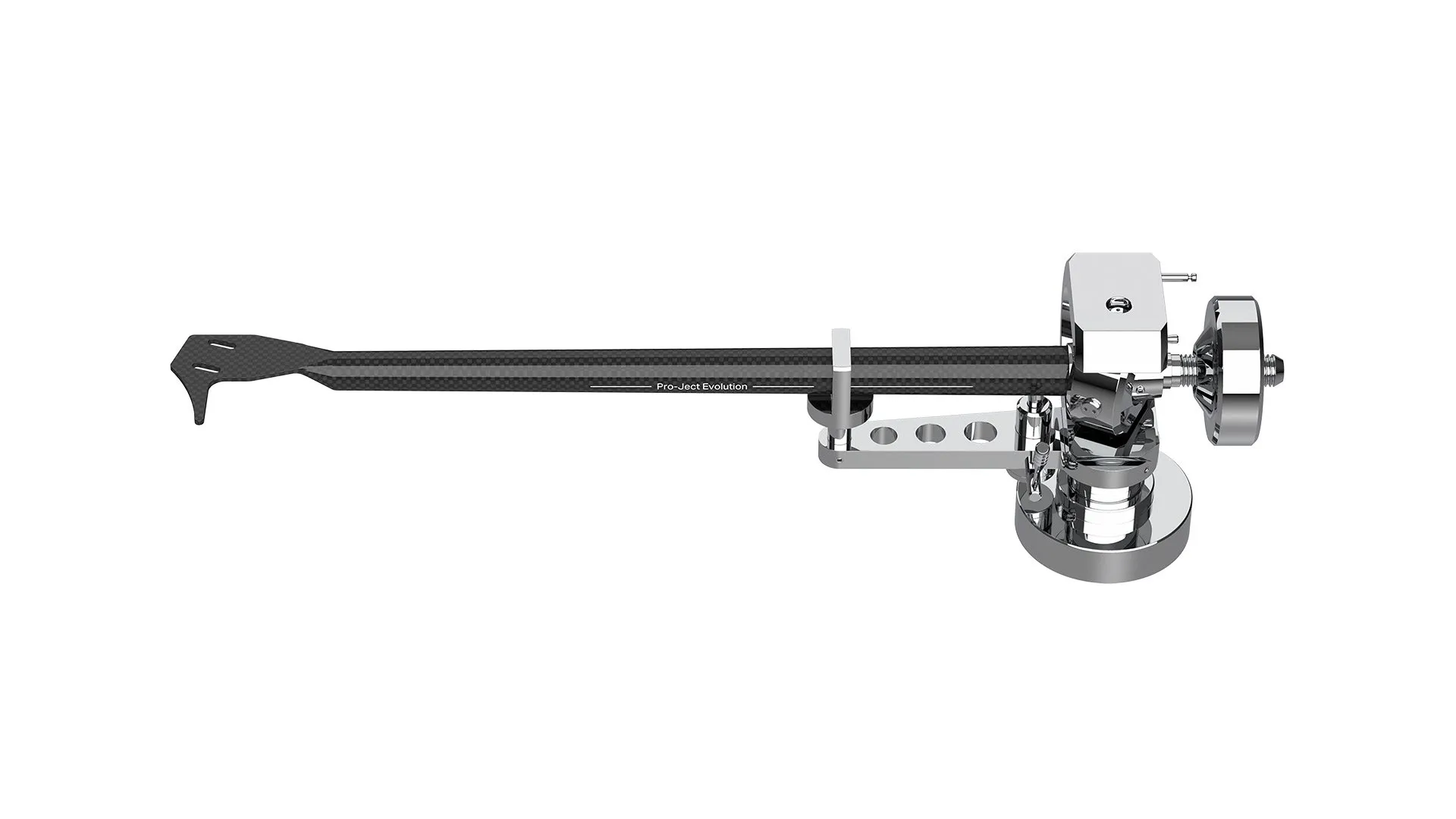Project's EVO CA Tonearm—Straight Carbon Fiber/Aluminum Sandwich Gets the Job Done! (Correction 10/15)
better in all ways compared to the EVO 12 AS other than the convenience factor
In the recent review of the Pro-Ject EV0 12 AS I promised a follow up covering the straight pipe carbon fiber, aluminum sandwich EVO CA arm and here it is. There's no point in repeating here all of the background information and all of the variables related to these two arms, so please read the review at the above hyperlink.
But it makes sense to repeat a bit of it: Both of the 12" arms under review have an effective length of 304.8mm and a 291.6mm pivot to spindle distance (both are also available in 9" and 10" versions as are all of the arms Pro-Ject is now sells as separates). Both terminate with gold plated DIN jacks. Pro-Ject does not supply DIN cables, which makes sense since buyers are more likely to want to choose their own, either RCA or XLR terminated. The arms pivot on an inverted cardanic Swiss-made ABEC 7 quality bearing with four stainless steel tips themselves set in cardanic bearings, set into a high mass "C" shaped outer gimbal ring.
The 12" EVO CA Premium (high gloss) version costs $2299. In black it's $1749. The 9" Premium costs $2199, in black it's $1649.
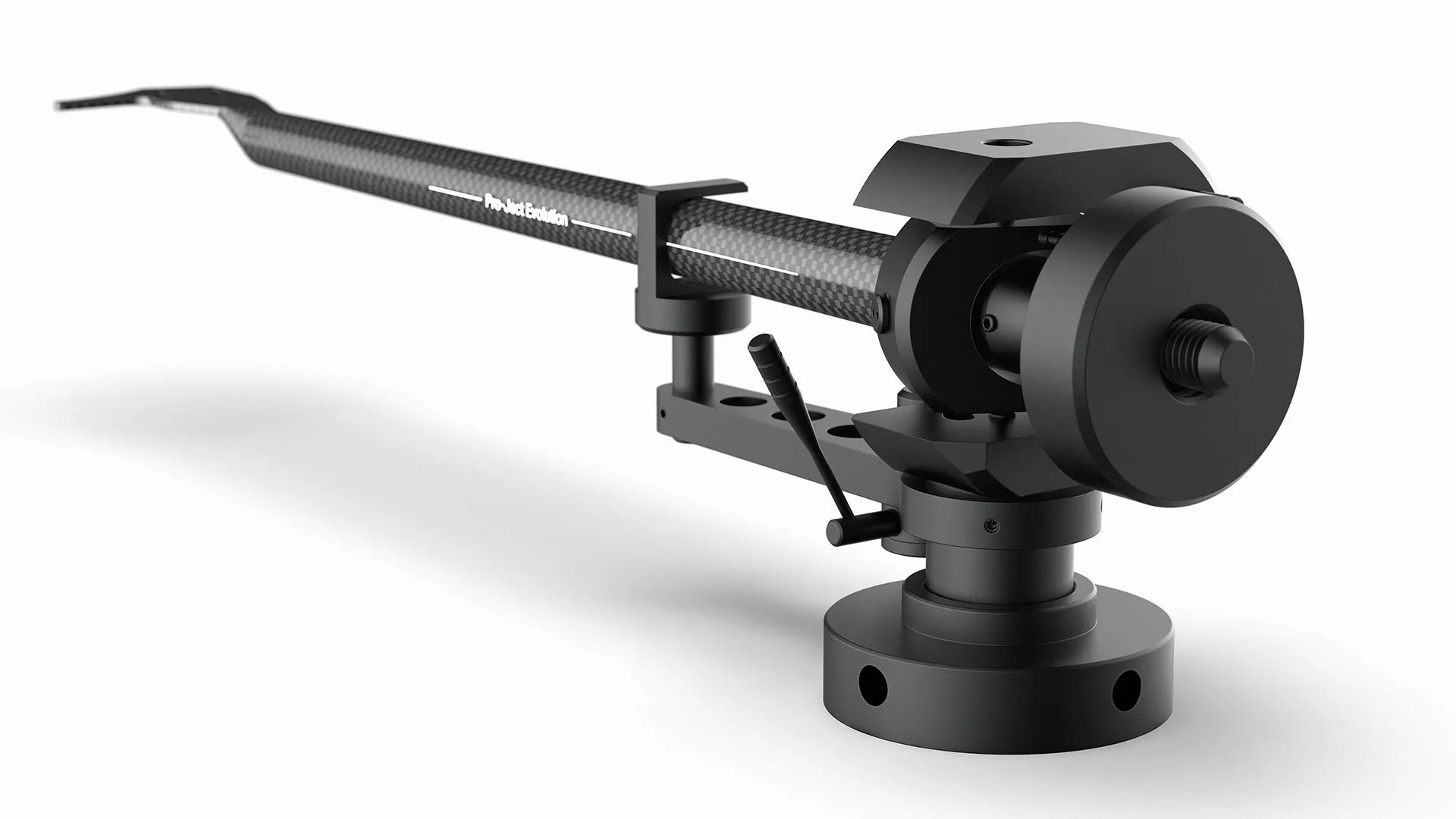 9" CA arm in black
9" CA arm in black
One of the biggest differences between the two arms is the number of wiring breaks between the cartridge clips and the DIN jack. The EVO CA's wiring goes without a break from the cartridge clips to the DIN jack at the bottom of the arm pillar. The EVO 12 AS has multiple breaks due to the swappable head shell feature. The AS's head shell swapping convenience produces a physical joint that affects arm rigidity. Otherwise the rear business end of both arms appears to be identical, so please read the AS review for full details. One other difference: azimuth is adjustable on the AS but not (as far as I can tell) on the CA.
( * Pro-Ject CEO Heinz Lichtenegger emailed to inform me that azimuth is adjustable. The tube can be rotated by loosening a set screw where it enters by the bearing. It's on the not visible side when the arm is mounted in the rear position and I didn't notice it before installation. However, I'd have hesitated to loosen it to find out. It's never a good idea to play around with unidentified screws on tonearms!
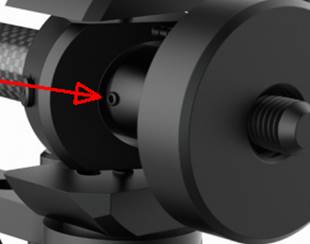
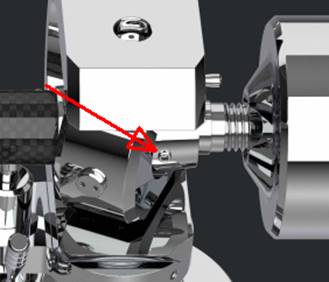
As I responded to him, I try to review as a consumer not as someone who has almost immediate access to a company's CEO! What's most need is a downloadable instruction manual! As I point out in both of these Pro-Ject arm reviews, as of now, there are no instruction manuals!)
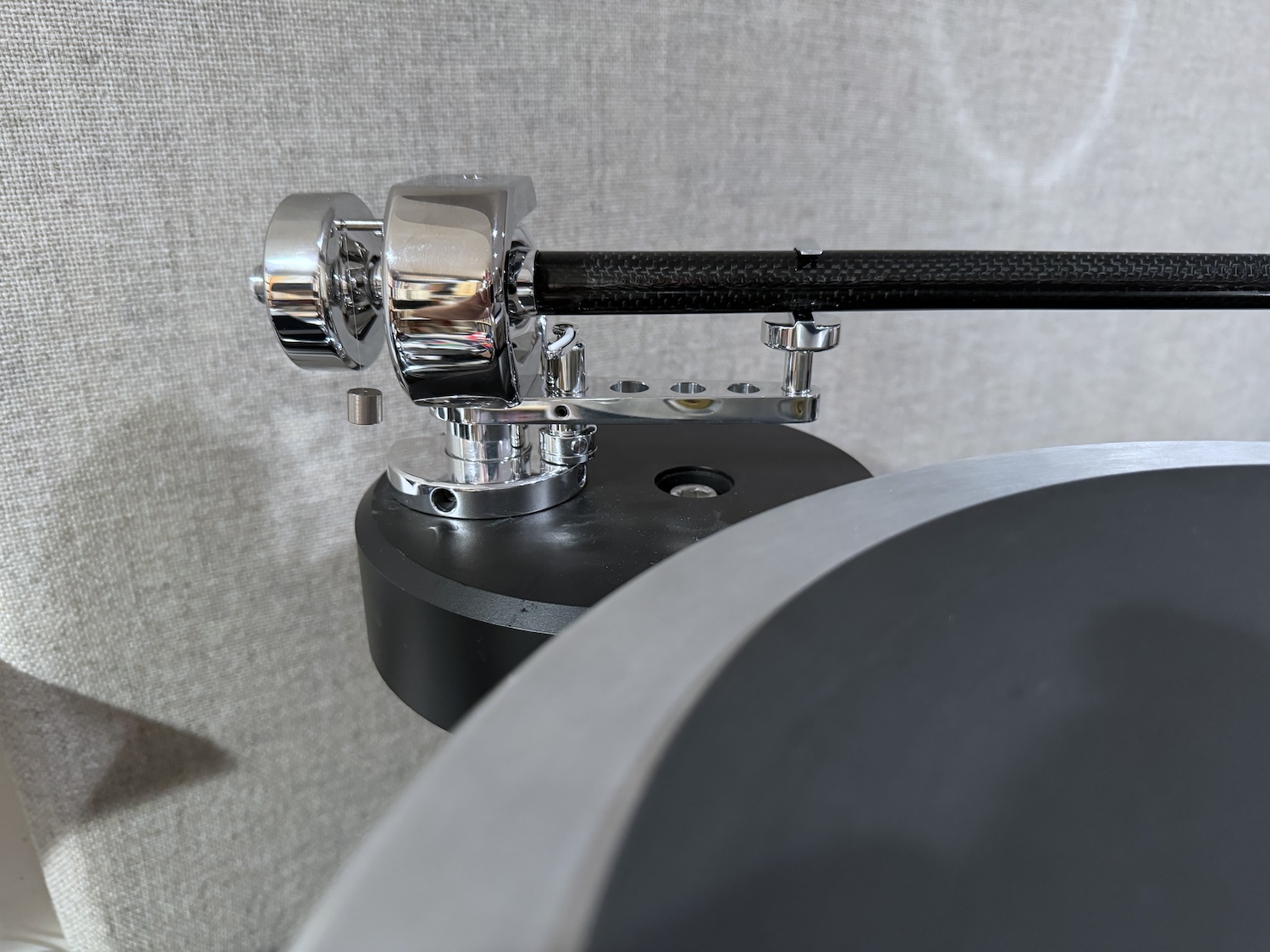 There were no construction issues with this sample as there were with the AS and I'm certain what I encountered was the "reviewer one-off syndrome". I always like to tell manufacturers "better me than a customer" but I also feel it important to tell readers what I found.
There were no construction issues with this sample as there were with the AS and I'm certain what I encountered was the "reviewer one-off syndrome". I always like to tell manufacturers "better me than a customer" but I also feel it important to tell readers what I found.
Basic set-up was the same but i did encounter one small issue that no experienced arm installer will have an issue with but it would sure be better if Pro-Ject produced detailed instructions that included this set-up issue and the issue was this: though there's great latitude in setting the arm's resting position relative to the platter (since the pivot is not offset from the mount), where you set it affects the operation of the cueing mechanism. You have to be sure when the lever is up anywhere across the record surface, especially at the beginning, that the arm rests on the cueing platform's rubber lip and not on the screw that affixes the platform to the lift cylinder. There's some finessing involved in getting this just right, as there is setting the platform's height.
Experienced arm installers will have no problem here but others might or probably will and it's where the cantilever/stylus is particularly vulnerable. As i wrote in the other review I couldn't find instructions online or in the box so I hope Pro-Ject produces some.
I installed the same Audio-Technica ART20 cartridge and first did the "tap test". The "tap" sounded through the speakers as a very low level well attenuated quick to decay "tap" but it definitely had less mid-bass and was decayed somewhat faster than what I heard on the AS arm. And the first time the stylus touched the record the "thunk" had less warmth, and was "faster" and somewhat better controlled than the one produced by the AS arm.
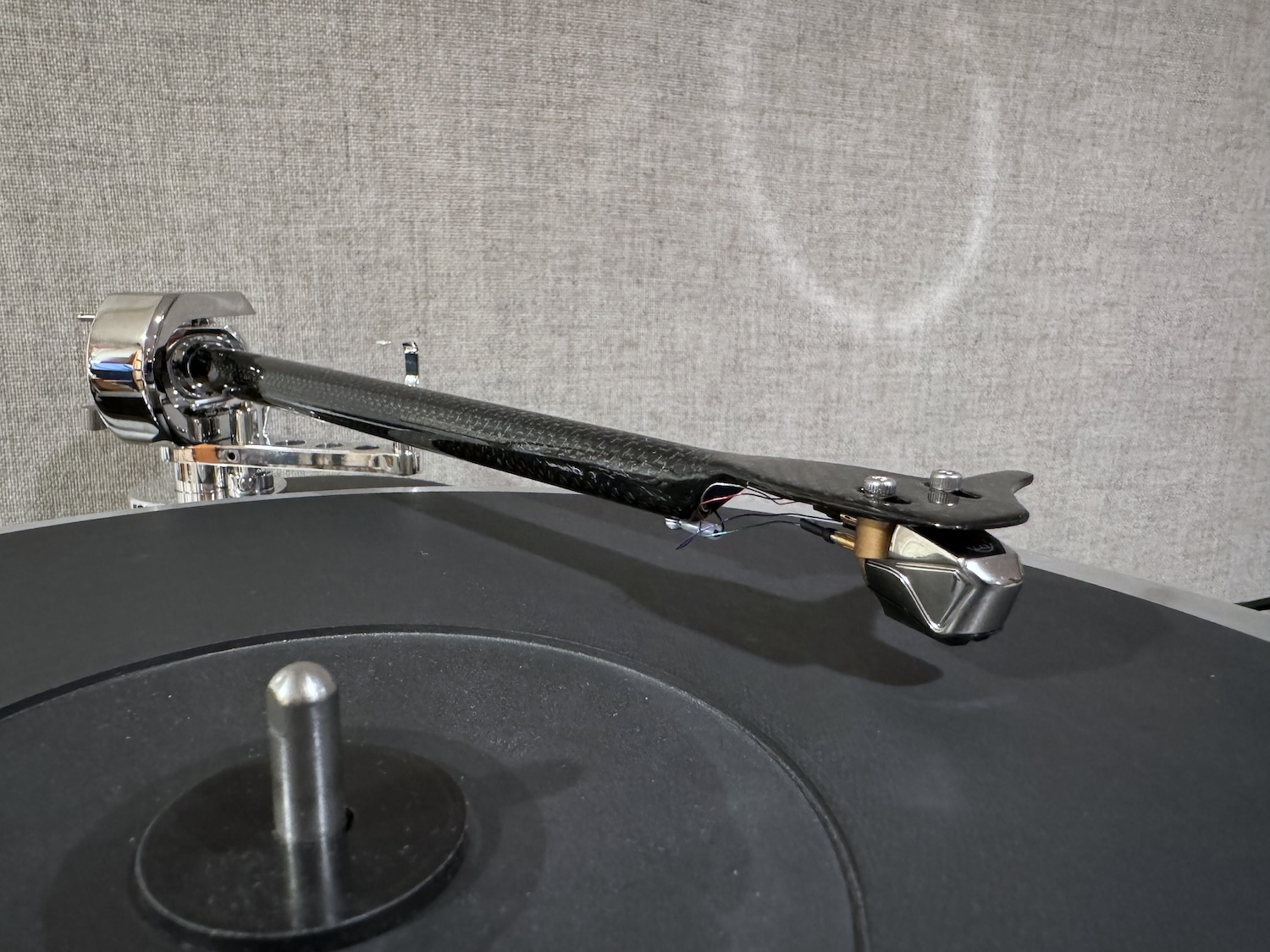
Though I played the same selection of records, all that was necessary to play was the Davy Spillane record. Bass here was tighter, deeper and more fully expressed. The timbral balance was more neutral especially in the midrange. So the pleasing richness of the Ullean pipes presented by the AS arm was somewhat diminished here but that sonic signature I felt was more of a pleasing slight additive coloration than revealing what was in the recording. The banjo and Dobro attack here was also faster and more refined, producing a more appropriately metallic sound.
Imaging focus and stability as well as soundstage width were comparable to what the AS produced from the ART20, but soundstage depth was greater and back of the stage image clarity was noticeably better, perhaps due to the improved midrange transparency produced by the stiffer arm. This despite the cartridge's measured channel separation imbalance that to correct on the AS arm required a bit of azimuth adjustment not possible on this arm (unless you buy a set of shims from Wallytools. It's far less convenient than setting it on the arm itself, but if you hear it or measure it "off" it's worth the small investment in time and money). I can't explain this but reporting it nonetheless.
Conclusion
If you require or desire the ability to easily swap out cartridges, and are willing to give up a bit of sonic performance, the AS version is an attractive, well designed and constructed arm that's also reasonably priced for the build quality and performance it offers. However, if you want maximum sonic performance I think the CA version is the way to go. The 9" black edition for $1649 is a mighty attractive, competitively priced tonearm that puts a rigid, well-designed, high quality tonearm within reach of many vinyl enthusiasts—though it and the AS version may be too heavy for many sprung chassis designs, so inquire about compatibility before buying. Otherwise, sitting on the back position of a turntable costing well over $300,000 the $2299 Pro-Ject CA Premium 12" arm brought an impressive sonic game to the 'table—it's performance faults were all of the subtractive kind— and using it was a pleasure—something worth considering since you two are going to be well-acquainted, hopefully for years to come.
Specifications
Specifications
Specs (12 / 10 / 9")
Effective tonearm length: 304.8 / 254 / 230mm
Mounting distance: 291.6 / 238 / 212mm
Offset angle: 18 / 21.4 / 24°
Overhang: 13.2 / 16 / 18mm
Pitch of headshell mounting grooves: 12.7mm
Effective tonearm mass: 24 / 19.5 / 16g
Cartridge weight: 7-20 / 5-18 / 7-18g
Tracking force range: 0-3g
Minimal null point: 125 / 126.8 / 130.6mm
Maximal null point: 251.7 / 248.2 / 243.7mm
Tonearm weight: 520 / 512 / 506g
Features
High-purity silver inner and headshell wiring
Heavy stainless steel bearing block
Massive inner tonearm bearing design (solid ring type)
Inverted Swiss ABEC 7 quality bearings
4 stainless steel tips in cardanic ball bearings
High-precision CNC machined
TPE-damped counterweight design (enclosed)
One-piece carbon/aluminum armtube
Outside ring is open to prevent bell-mode resonances
Silver-colored aluminum & steel parts polished by hand
Accurate azimuth and VTA adjustment
Silicone-damped armlift can be adjusted to suit arm height
Gold-plated 5-pin DIN output socket
Available as CA Premium Black & CA Premium HG in 9, 10 and 12″
Made in Europe


